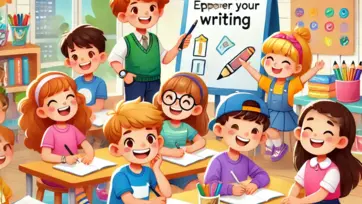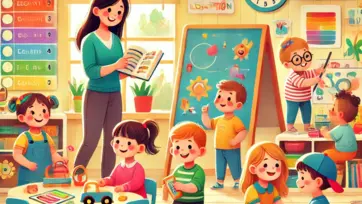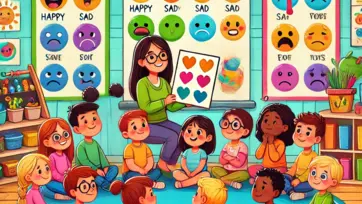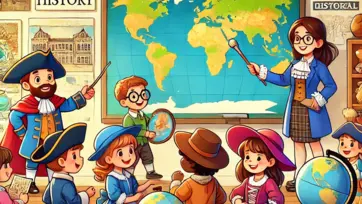Choosing between homeschooling and traditional schooling is a major decision for parents. Both options have their advantages and challenges, and the best choice depends on your child’s needs, learning style, and family situation.
Some parents prefer traditional schools for structured education, socialization, and extracurricular activities. Others opt for homeschooling to provide personalized learning and a flexible schedule.
In this article, we’ll explore the key differences between homeschooling and traditional schooling, their pros and cons, and how to decide what’s best for your child.
What is Homeschooling?
Homeschooling is when parents take full responsibility for their child’s education at home instead of sending them to a traditional school. Parents can use curriculum guides, online resources, or hire tutors to teach various subjects.
Key Features of Homeschooling:
✔ Flexible schedule – Kids can learn at their own pace.
✔ Customized learning – Lessons are tailored to the child's strengths and interests.
✔ One-on-one attention – More personalized instruction.
✔ Parent-led education – Parents choose teaching materials and methods.
Homeschooling is popular among families who prefer personalized education and more control over what their children learn.
What is Traditional Schooling?
Traditional schooling refers to public or private schools where children learn in a structured classroom environment with teachers and peers. Schools follow a fixed curriculum set by educational boards.
Key Features of Traditional Schooling:
✔ Structured environment – Fixed schedules and lesson plans.
✔ Socialization – Children interact with classmates daily.
✔ Extracurricular activities – Access to sports, clubs, and field trips.
✔ Professional teachers – Certified educators guide learning.
Traditional schools provide a standardized education and social learning experience for students.
Key Differences Between Homeschooling and Traditional Schooling
| Factor | Homeschooling | Traditional Schooling |
|---|---|---|
| Schedule | Flexible, can be adjusted | Fixed schedule with school hours |
| Curriculum | Customized to the child’s needs | Standardized curriculum for all students |
| Class Size | One-on-one or small groups | Larger classrooms with multiple students |
| Socialization | Limited interaction unless planned | Daily social interaction with peers |
| Parental Involvement | High – Parents act as teachers | Low – Teachers handle most instruction |
| Cost | Can vary (materials, tutors) | Public schools are free; private schools cost more |
| Extracurriculars | Parents arrange activities | Sports, clubs, music, and events available |
Each method has unique benefits and challenges. Let’s dive deeper into their pros and cons.
Pros and Cons of Homeschooling
✅ Advantages of Homeschooling
✔ Personalized Learning – Children learn at their own pace, focusing on strengths and improving weaknesses.
✔ Flexible Schedule – Families can travel or adjust study hours as needed.
✔ Safer Environment – Avoids bullying, peer pressure, and negative school influences.
✔ Stronger Family Bond – Parents and children spend more time together.
❌ Challenges of Homeschooling
✖ Limited Socialization – Fewer opportunities for peer interaction unless parents arrange activities.
✖ High Parental Responsibility – Parents must plan lessons, track progress, and teach effectively.
✖ Potential Cost – Buying educational materials and hiring tutors can be expensive.
✖ Less Access to Extracurriculars – No built-in sports teams or school clubs.
Homeschooling requires dedication, time, and effort from parents, but it offers flexibility and personalized learning.
Pros and Cons of Traditional Schooling
✅ Advantages of Traditional Schooling
✔ Structured Education – Schools follow a proven curriculum and learning plan.
✔ Social Development – Kids interact with diverse classmates and learn teamwork.
✔ Certified Teachers – Experienced educators handle lessons and assessments.
✔ Extracurricular Activities – Sports, music, drama, and clubs enhance learning.
❌ Challenges of Traditional Schooling
✖ Fixed Schedules – Students must follow school hours and homework deadlines.
✖ Bullying and Peer Pressure – Exposure to negative social experiences.
✖ One-Size-Fits-All Approach – Some kids struggle with rigid learning methods.
✖ High Costs for Private Schools – Tuition and extra fees can be expensive.
Traditional schooling provides a structured, social, and teacher-led learning experience but may not suit all learning styles.
Which is Best for Your Child?
Every child is unique, and the best choice depends on:
1. Your Child’s Learning Style
- If your child learns best with hands-on activities, flexible schedules, and one-on-one instruction → Homeschooling may be better.
- If your child thrives in structured environments and enjoys group learning → Traditional schooling may be a good fit.
2. Social Needs
- If your child needs daily social interaction, traditional schooling offers more opportunities.
- If you can arrange homeschool groups, extracurricular activities, and community events, homeschooling can also provide socialization.
3. Family Lifestyle and Schedule
- Homeschooling works well for families who travel often or want more control over education.
- Traditional schooling fits families who prefer a structured routine and school support.
4. Parental Availability
- Homeschooling requires parents to be actively involved in teaching and lesson planning.
- Traditional schools provide professional teachers, reducing parental workload.
5. Financial Considerations
- Public schools are free, while private schools can be costly.
- Homeschooling may require educational expenses for books, materials, and tutors.
Final Verdict: The Best Choice Depends on Your Child
There is no one-size-fits-all answer to choosing between homeschooling and traditional schooling.
👉 If you want a structured education, certified teachers, and regular social interaction → Traditional schooling is the better choice.
👉 If you prefer a flexible schedule, customized learning, and a safe environment → Homeschooling may be a great option.
The best approach is to evaluate your child's needs, your family's lifestyle, and your ability to provide support. Some parents even combine both methods by homeschooling for certain years and later enrolling in traditional school.
Final Tip:
No matter which option you choose, support your child’s learning journey, encourage curiosity, and help them develop good study habits for lifelong success!
Share Your Thoughts!
Do you prefer homeschooling or traditional schooling? Share your experiences and opinions in the comments below!








